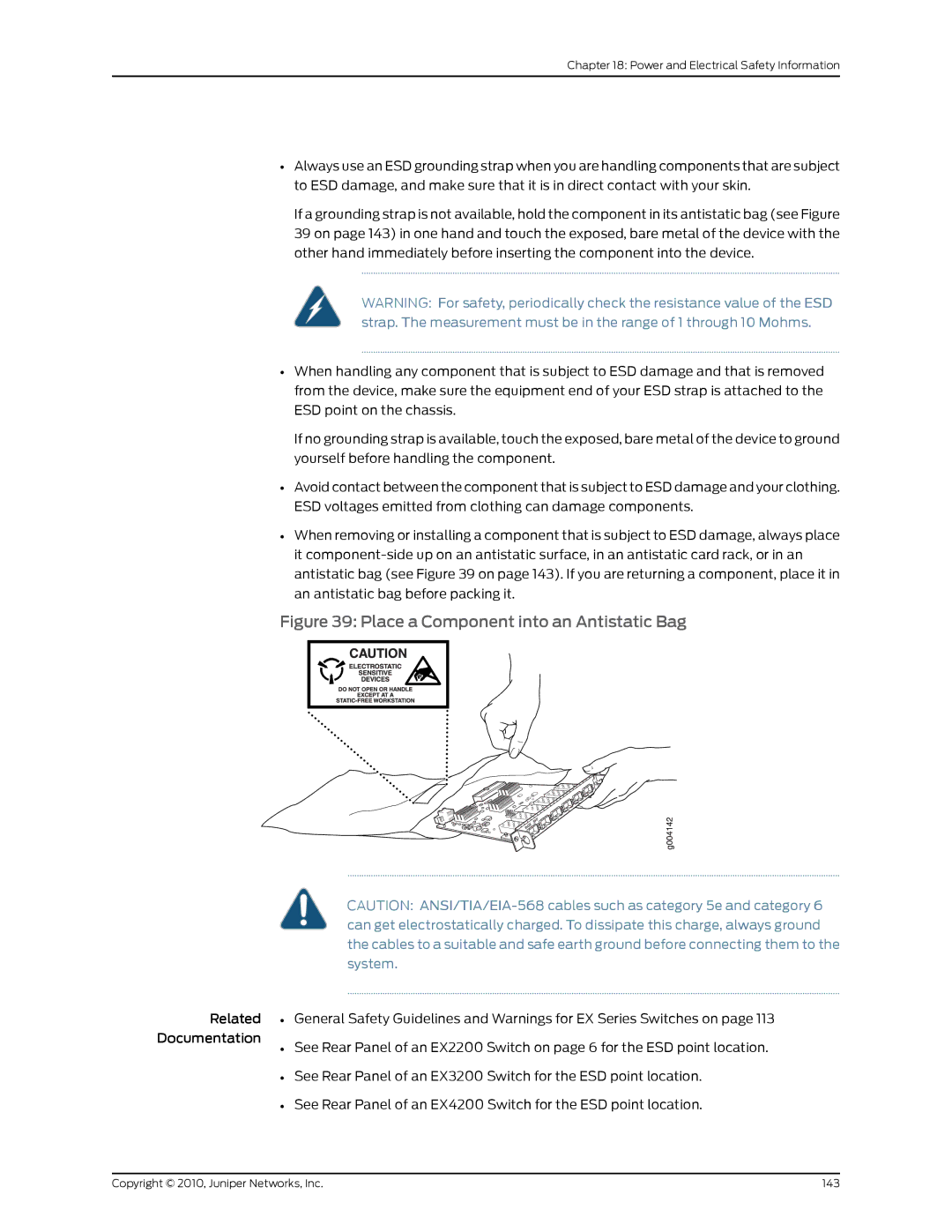
Chapter 18: Power and Electrical Safety Information
•Always use an ESD grounding strap when you are handling components that are subject to ESD damage, and make sure that it is in direct contact with your skin.
If a grounding strap is not available, hold the component in its antistatic bag (see Figure 39 on page 143) in one hand and touch the exposed, bare metal of the device with the other hand immediately before inserting the component into the device.
WARNING: For safety, periodically check the resistance value of the ESD strap. The measurement must be in the range of 1 through 10 Mohms.
•When handling any component that is subject to ESD damage and that is removed from the device, make sure the equipment end of your ESD strap is attached to the ESD point on the chassis.
If no grounding strap is available, touch the exposed, bare metal of the device to ground yourself before handling the component.
•Avoid contact between the component that is subject to ESD damage and your clothing. ESD voltages emitted from clothing can damage components.
•When removing or installing a component that is subject to ESD damage, always place it
Figure 39: Place a Component into an Antistatic Bag
| CAUTION: |
| can get electrostatically charged. To dissipate this charge, always ground |
| the cables to a suitable and safe earth ground before connecting them to the |
| system. |
Related • | General Safety Guidelines and Warnings for EX Series Switches on page 113 |
Documentation | See Rear Panel of an EX2200 Switch on page 6 for the ESD point location. |
• |
• See Rear Panel of an EX3200 Switch for the ESD point location.
• See Rear Panel of an EX4200 Switch for the ESD point location.
Copyright © 2010, Juniper Networks, Inc. | 143 |
